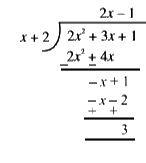Discuss diffraction at single slit and obtain the consition for nth minimum. Diffraction at single slit: Solution in Tamil
Video Solution
Text Solution
(i) Let a parallel beam of light fall normally on a single slit AB of width. The diffracted beam falls on a screen kept at a distance. The center of the slit is C. . (ii) A straight line through C perpendicular to the plane of slit meets the center of the screen at 0. The intensity at any point P on the screen is to be found. (iii) · The lines joining P to the different points on the slit can be treated as parallel lines, making an angle θ with the normal CO. (iv) All the waves start parallel to each other from different points of the slit and interfere at point P and other points to give the resultant intensities. (v) The point P is in the geometrically shadowed region, up to which the central maximum is spread due to diffraction. Condition for the point P to be of various minima. (vi) Divide the slit into 'much smaller even number of parts. Then, add their contributions at P with the proper path difference to show that destructive interference takes place at that point to make it minimum.

Condition for P to be first minimum :
(i) Let us divide the slit AB into two half's AC and CB. Now the width of AC is (a2) . We have different points on the slit which are separated by the same width (here a2) called corresponding points as shown in Figure.

(ii) The path difference of light waves from different corresponding points meeting at point P and interfere destructively to make it first minimum. The path difference o between waves from these corresponding points is, delta = a/2 sin theta.TheconditionforP→befirstminiμm,<br>a/2 sin theta = lamda/2<br>asinθ=λ (first minimum)
Condition for P to be second minimum :
(i) Let us divide the slit AB into four equal parts. Now, the width of each part is a4 We have several corresponding points on the slit which are separated by the same width a4 . The path difference δ between waves from these corresponding points is, δ=a4sinθ . (ii) The condition for P to be second minimum,
a4sinθλ2
0asinθ=2λ (second minimum)
Condition for P to be third order minimum :
The same way the slit is divided in to six equal parts to explain the condition for P to be third minimum is a6sinθλ2
asinθ=3λ ( third minimum ) Condition for P to be nth order minimum :
Dividing the slit into 2n number of (even number of) equal parts makes the light produced by one of the corresponding points to be cancelled by its counterpart. Thus, the condition for nth order minimum is a2nsinθλ2
asinθ=nλ ( nth minimum)
|
Similar Questions
Discuss diffraction at single slit and obtain the consition for nth minimum. Diffraction at single slit:
View SolutionDiscuss diffraction at single slit and obtain the consition for n^(th) minimum. Diffraction at single slit:
View SolutionThe first diffraction minimum due to a single slit Fraunhoffer diffraction is at the angle of diffraction 30^(@) for a light of wavelength 5460A^(@) . The width of the slit is
View SolutionDiffraction Due to a Single Slit
View Solutionफ्रॉनहॉफर के एकल स्लिट विवर्तन के लिए -
View SolutionThe first diffraction minimum due to a single slit Fraunhoffer diffraction is at the angle of diffraction 30∘ for a light of wavelength 5460A∘. The width of the slit is
View SolutionIn a single slit diffraction pattern
View SolutionIn single slit diffraction pattern :
View Solution

